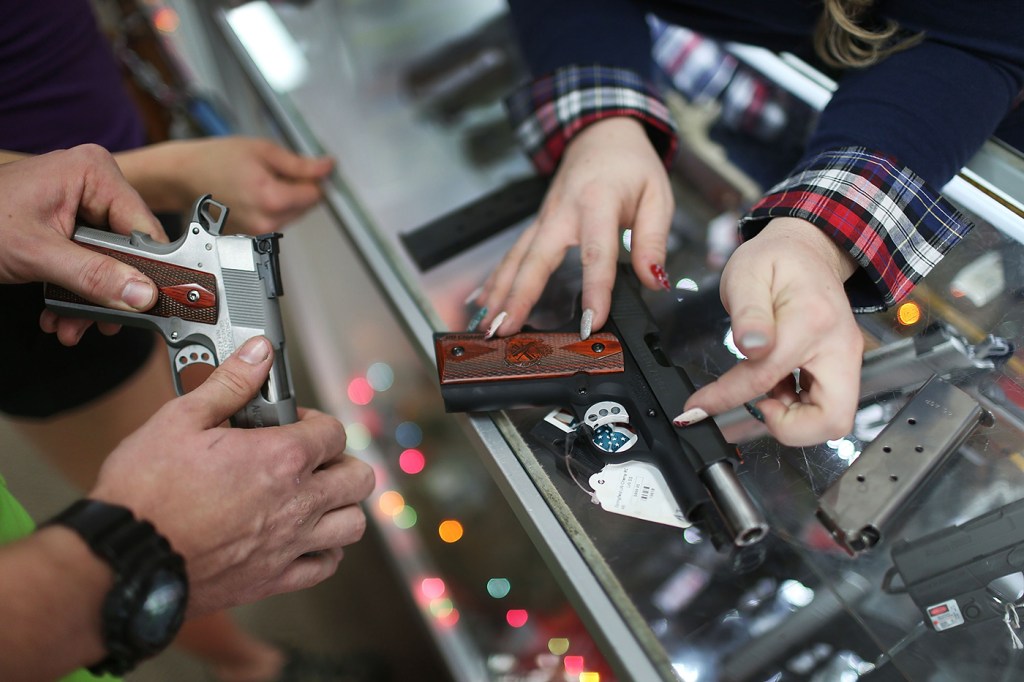What is driving gun purchases in the US? It may have to do with who is in the White House

It’s well reasoned that there are more guns than people in the United States. But tracking firearms acquisition is a nightmarish data project—and anything but exact, because there is no publicly available national database for gun purchases. So, to gain insight into nationwide acquisition trends, experts must examine the next best metric to infer purchases: background checks.
That’s what researchers at Northeastern detailed in a new paper published in AIP Chaos: An Interdisciplinary Journal of Nonlinear Science that sheds light on national acquisition trends across more than two decades of background check data.
Researchers found that gun acquisitions across the country follow annual patterns that are highly synchronized state by state, with several variations tied to U.S. presidential terms, says Rifat Sipahi, professor of mechanical and industrial engineering at Northeastern and co-author of the research. Xu Wang, a Northeastern PhD student, and Maurizio Porfiri, of New York University, also co-authored the research.
“What we noticed is that when two states are oscillating in their background checks data, sometimes they go up and down together,” Sipahi says. “So they have a really synchronized behavior.”

In fact, the researchers found that, dating back some 22 years, U.S. states are “very well synchronized” in their acquisition trends, meaning that when they oscillated they did so together. But that synchronization collapsed at several points across that 22-year span, including following the 2008-2009 economic downturn and during specific presidential terms.
“Somehow the behavior of people who would like to buy firearms has changed” during these points, Sipahi says
Sipahi says the disharmony is hard to explain, but may have to do with economic and legal factors, and shifts in the political discourse surrounding guns as influenced by different political factions gaining power. For example, researchers note there was a dramatic increase in national background checks immediately after Barack Obama was elected in 2008 in response to fears of stricter gun regulation.
“The climate in which people make decisions [about gun purchases] changes, potentially,” he adds.
Sipahi says the team of researchers haven’t fleshed out precisely if and how these purchasing trends are tied to one or another political faction. But, he notes, that there were significant blips in the data during Barack Obama’s first term, and Donald Trump’s “pre-COVID” term.
The data also showed annual similarities across states that suggested people may be purchasing more firearms around the holidays, in the early spring and at the onset of the hunting season. There seems to be fewer transactions during the summer months, Sipahi says.
For all of the broad patterning researchers uncovered, Sipahi stresses that background checks do not correspond one-to-one with firearm sales.
“Not every background check yields a firearm acquisition, and sometimes one background check, in a given state, may yield multiple firearm acquisitions,” he says. “So we never know exactly how many firearms are being purchased at a given time. That information is not publicly available.”
Sipahi says there are “multiple, entangled processes underlying how firearm acquisition is trending in the U.S.” Furthermore, data collection practices in different states are not necessarily the same.
“There is no national registration, there is no law or registry on the books that requires that gun owners have to either registered or convey how many guns they actually own,” Edgar Domenech, a former deputy director of the Bureau of Alcohol, Tobacco, Firearms and Explosives, said previously, according to ABC.
Still, Sipahi says tracking background checks as a proxy for gun purchases can provide some useful insight, such as acquisition behavior in different states at different times, how new gun laws in certain states influence trends, and whether there are oscillations linked to changes in presidential administrations (as the research shows).
“Our starting point is really good, transparent, well-recorded data,” he says. “We are not policymakers. But with data in hand, we can really understand what the drivers of firearm acquisition are, what the trends are and their causes, and can help explain the data for use by policymakers. That is our mission.”
For media inquiries, please contact media@northeastern.edu






